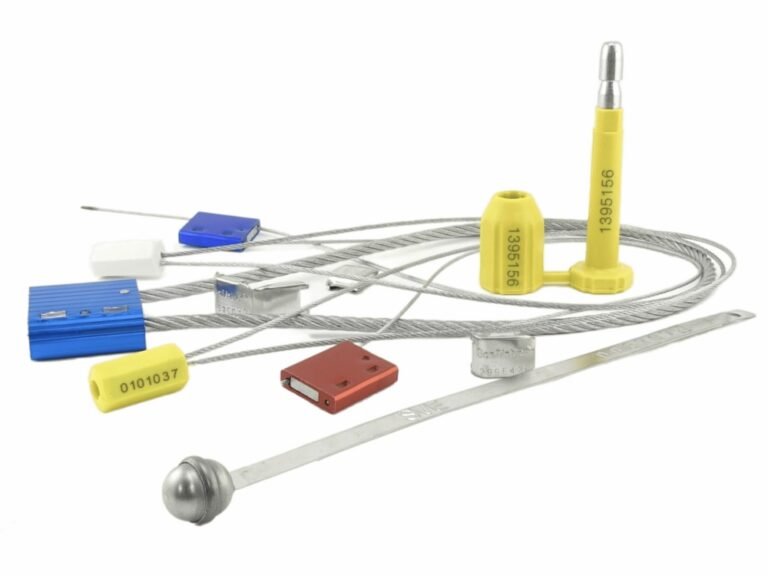You've seen amazing "hologram" projectors made with a smartphone on YouTube. This makes you wonder: if it's that simple, how can a hologram sticker possibly be a secure feature for my products?
A DIY "hologram" is just a reflection, like a ghost in a window, designed to be easily copied. A professional security hologram is an engineered structure, created with lasers and designed from the ground up to be extremely difficult and expensive to replicate.

I get this question all the time, and it's a great one. The confusion is understandable because both things can look "holographic." But in my 15 years in this industry, I've learned the most important difference isn't what you see; it's the core purpose behind why they were created. They are built on what I call completely opposite "Security Design Missions." One is designed to have zero security, while the other is designed to be a fortress. To truly understand this, we first need to break down what that "hologram" on your phone really is.
First, What Is the "DIY Hologram" You See on Your Phone?
You see a video of a plastic pyramid on a smartphone, showing a floating 3D character. It looks magical, and you're thinking, "How is something so simple and cheap considered a hologram?"
That floating image is not a true hologram. It's a simple, centuries-old visual trick called Pepper's Ghost. It's designed to be extremely easy and cheap to reproduce, making it perfect for entertainment but useless for security.
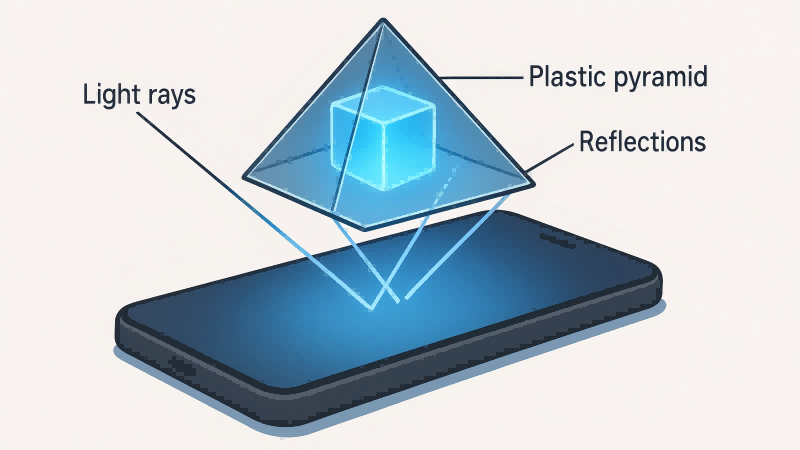
The best way to understand Pepper's Ghost is to think of the classic haunted mansion attraction. You see ghosts sitting at a dinner table, but they are transparent. This is achieved by reflecting an image of costumed actors from a hidden room onto a large sheet of angled glass. The pyramid on your phone does the exact same thing on a tiny scale. It takes a specially formatted video from your phone's flat screen and reflects it off four clear plastic sides, creating the illusion of a 3D object floating in the middle.
Its design mission is zero security. The technology is public, the materials are cheap (a piece of plastic), and it's intended to be copied by anyone. It's pure visual decoration, with absolutely no anti-counterfeiting properties.
So, What Defines a True "Security" Hologram?
You now know the phone trick is just a reflection. So, what makes the shiny sticker on a passport or your product's packaging a "security" feature?
A true security hologram is a piece of precision engineering. Its image is created by a microscopic physical structure that has been created with lasers. Its security is defined not by the image you see, but by the extreme difficulty and expense required to replicate that microscopic physical structure.
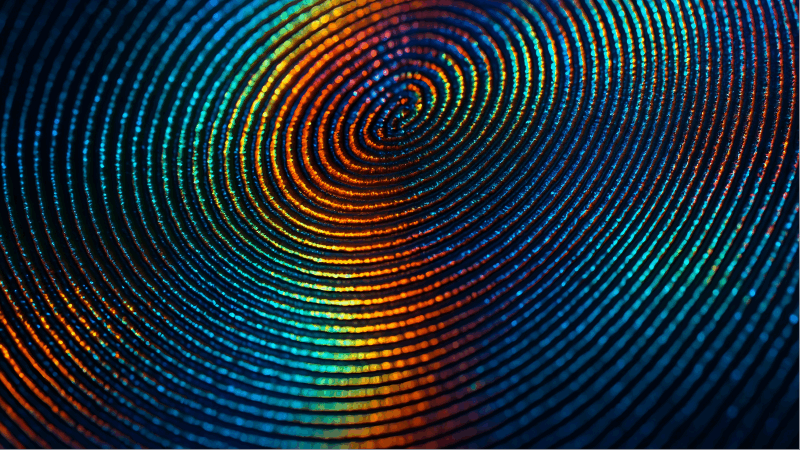
This brings us to the opposite design mission: to build a barrier. I always tell clients to think of the difference between a photograph and a sculpture.
- A DIY hologram (Pepper's Ghost) is like a photograph. You can easily take another picture of it.
- A security hologram is like a complex metal sculpture. It's a physical object with depth and texture at a microscopic level. You can't photocopy a sculpture; all you get is a flat, distorted picture of one side.
To copy a security hologram, a counterfeiter can't just take a photo. They would need to invest hundreds of thousands of dollars to build a holography lab with optical tables and lasers, and they'd need to hire a physicist with expertise in holography. This massive technological and financial wall is the entire point.
The Fundamental Difference: Visual Trick vs. Technological Barrier
Both things can create a 3D-like effect, which is the source of the confusion. You might be struggling to justify the cost of real security holograms when the DIY version seems to produce a similar visual.
The fundamental difference lies in their opposing design missions. A DIY hologram is a visual trick designed for open replication. A security hologram is a technological barrier designed for closed protection. Their purposes are in direct opposition to each other.
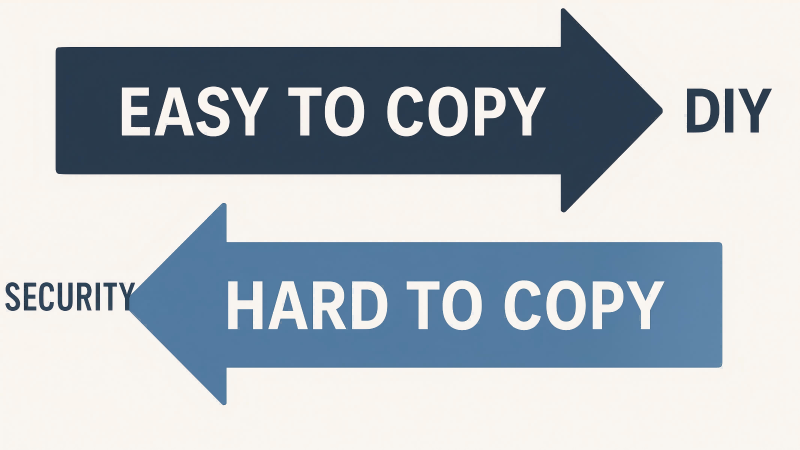
Let's break down this opposition in a table. As a business owner evaluating a solution, understanding this is critical.
| Aspect | DIY Hologram (Pepper's Ghost) | Professional Security Hologram |
|---|---|---|
| Design Mission | Zero Security: Be easy and cheap to copy for decoration. | Build a Barrier: Be difficult and expensive to copy for protection. |
| Core Technology | Simple reflection (optics). | Complex light diffraction (physics). |
| Replication Method | Anyone with a phone and a plastic sheet can do it. | Requires a specialized holography lab and expert knowledge. |
| Barrier to Entry | None. $0 investment. | Extremely high. $100,000+ investment. |
| Primary Goal | Entertainment and novelty. | Asset protection and authentication. |
The shiny, 3D look is just a side effect. The true product is the underlying security mission. One sells a fun illusion; the other sells peace of mind and protection for your business.
A Look at Applications: Entertainment Toy vs. Business Asset Protection
You're trying to figure out where each of these technologies fits. It's clear they aren't the same, but their practical applications are worlds apart.
A DIY hologram is an entertainment toy or a marketing novelty. A professional security hologram is a functional business asset, used to protect revenue, brand reputation, and supply chains from the tangible threat of counterfeiting.
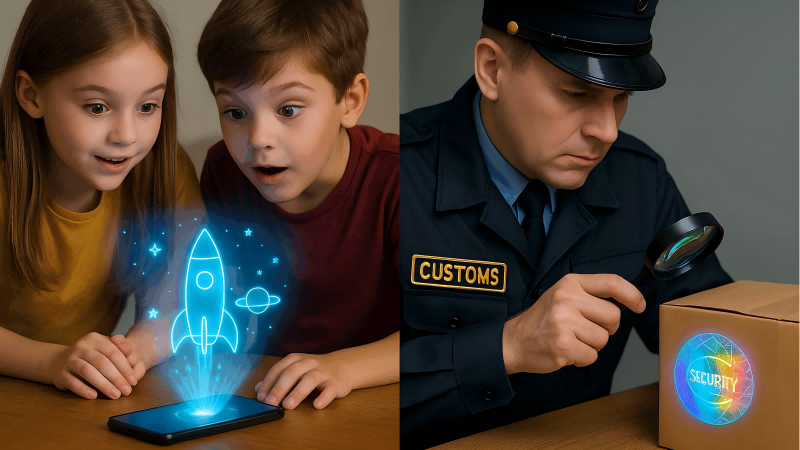
Thinking about the application is the final step in seeing the true difference.
Applications for a DIY Hologram (The Toy):
- Cool social media videos.
- Novelty displays at small trade show booths.
- Educational science fair projects.
- Promotional giveaways.
Essentially, any application where there is no value being protected and where you want people to be able to easily replicate the effect.
Applications for a Security Hologram (The Asset):
- Brand Protection: Sealing products to prove they are genuine, preventing fakes from entering the market.
- Anti-Tampering: Showing if a product has been opened or altered, crucial for electronics and pharmaceuticals.
- Document Security: Protecting passports, ID cards, event tickets, and certificates from forgery.
- Track-and-Trace: Combining the hologram with a QR code to monitor products through the supply chain and fight gray market activity.
One is a cost for a fun campaign. The other is an investment to protect your core business assets.
A Buyer's Quick Guide: How to Spot a Real Security Hologram in a Minute
You're at a trade show or looking at supplier samples. You need a quick, reliable way to tell if you're looking at a real security feature or just a fancy-looking sticker.
Tilt the sticker under a light. A real security hologram will show clear changes in color (rainbow effect) and reveal different layers or images from different angles. A fake or low-security sticker will look flat, have a dull shine, or simply look like glittery print.
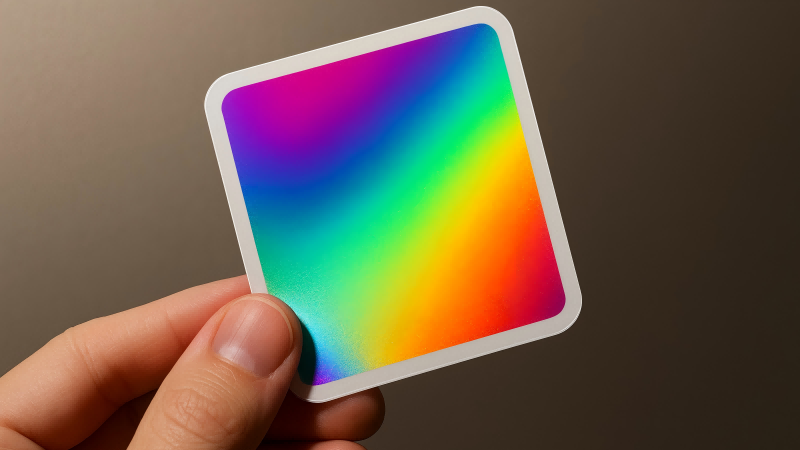
As a former QC inspector, I've taught clients this simple 3-point check. It only takes a minute and can save you from making a huge mistake.
- Look for the Rainbow (Color Shift): A true hologram is a diffraction grating. As you tilt it, the colors should shift smoothly through the spectrum (like a rainbow on a CD). Stickers that just use metallic ink will have a flat shine but no true color shift.
- Look for Depth (Parallax): A good security hologram has layers. As you rock the sticker back and forth, the foreground elements should appear to move in front of the background elements. This 3D effect, called parallax, is very difficult to fake. A printed sticker is always flat.
- Look for Clarity and Detail: A professionally mastered hologram has sharp, clear lines and details. A counterfeit or cheap imitation often looks blurry or "muddy." The details are not crisp because it's a copy of a copy.
If a potential supplier's sample fails these tests, walk away. They are not providing a real security product.
Conclusion
The difference is mission: a DIY hologram is a toy built to be copied, while a security hologram is a business asset engineered to be a formidable barrier against counterfeiters.
Protect Your Business with a Real Security Asset
Don't gamble your brand's reputation on a visual trick. At ProtegoSeal, we engineer true holographic security solutions. Contact us to get authentic samples and see the difference for yourself.

